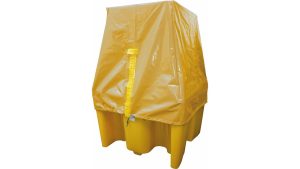We use cookies to make your experience better. To comply with the new e-Privacy directive, we need to ask for your consent to set the cookies. Learn more.
Ten simple steps to prepare your business for winter

Ten Simple Steps:
- Implement an emergency weather plan, if you do not already have one. Take the time to analyse the risks extreme weather could cause.
- Clear external walkways and car parks of ice and snow build up. Have salt/grit available to de-ice external areas, making walkways safe.
- Maintain internal walkways with absorbents to reduce the risk of slippery surfaces.
- Use Signage and lighting to highlight hazard areas which cannot be improved with other measures.
- Building maintenance. Check pipes and drains, ensure they are all maintained to prevent leaks or water back up. Clear any storm drains of debris to reduce the risk of pooling water. Use salt to de-ice around drains ensuring water can flow away. You should also check your roof. Remove substantial amounts of snow and check for gaps and damage to prevent roof leaks. The change in weather often causes damage to roofs but resolutions do not need to be costly, leak diverter kits can be installed to funnel any leaks safely preventing damage to equipment or from causing a slip hazard.
- Check your external storage facilities. If you use secondary containment outside such as spill pallets or bunding ensure they are protecting your containers in extreme weather. Weatherproof covers are available for spill pallets to prevent water ingress.

- Sign up for weather warnings in your area to ensure you are aware of extreme weather forecasts in advance.
- Prepare company vehicles. Conduct regular maintenance checks such as tyres, windscreen chips and fluid levels. You can also equip vehicles with shovels and blankets to prepare them for sudden changes in weather.
- Remove snow from emergency equipment and signage, keeping it visible and accessible in an emergency.
- Check in regularly with your team, and pass on any updates
Act Now
Our guidance focuses on spill control and liquids on site, so there are other steps which may apply to your industry that will become apparent during your risk assessment.Being prepared in advance will reduce the impact any severe weather may have on your business. Keeping your employees and customers safe and protecting your business continuity as much as you can.
You may also like our Flood Action Week article for more information on preparing for Floods.
For more information on winter protection products please contact our team.
Committed to helping you protect people and the environment
You May Also be Interested In:
-

Site Survey
We assess your site, equipment, and spill training procedures, highlighting any potential danger zones that are apparent on site.
Read More -

Spill Training
Spill training courses designed to ensure your team are fully compliant and confident to prevent and deal with any spill incident.
Read More -

Managed Spill Service
A complete solution that we manage on your behalf, providing appropriate spill products with a regular audit and replenishment service
Read More -

Spill Equipment
Wide range of equipment to help prevent or respond to spills safely. Including safe storage, trollies, spill kits, PPE and much more
Read More

